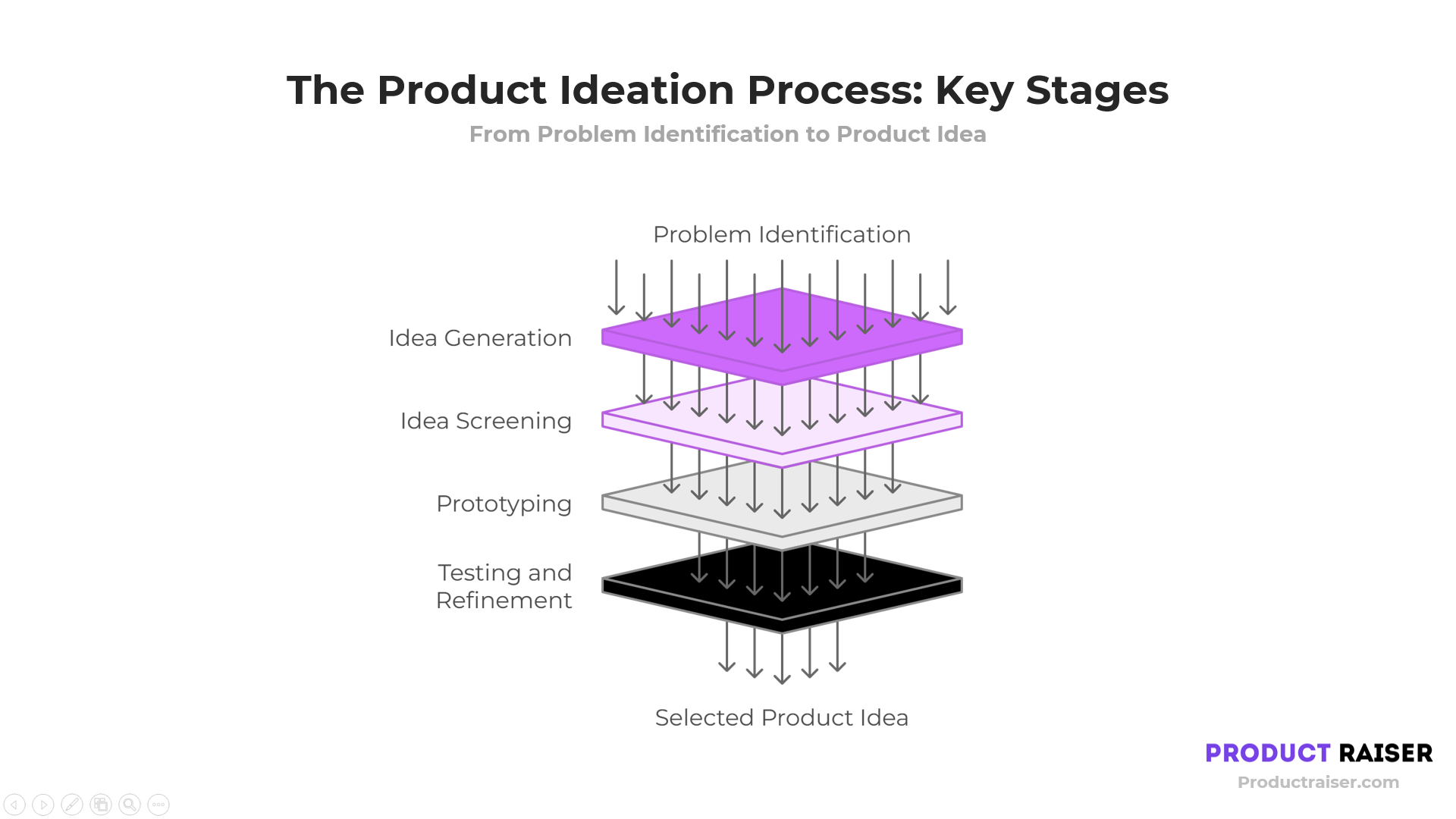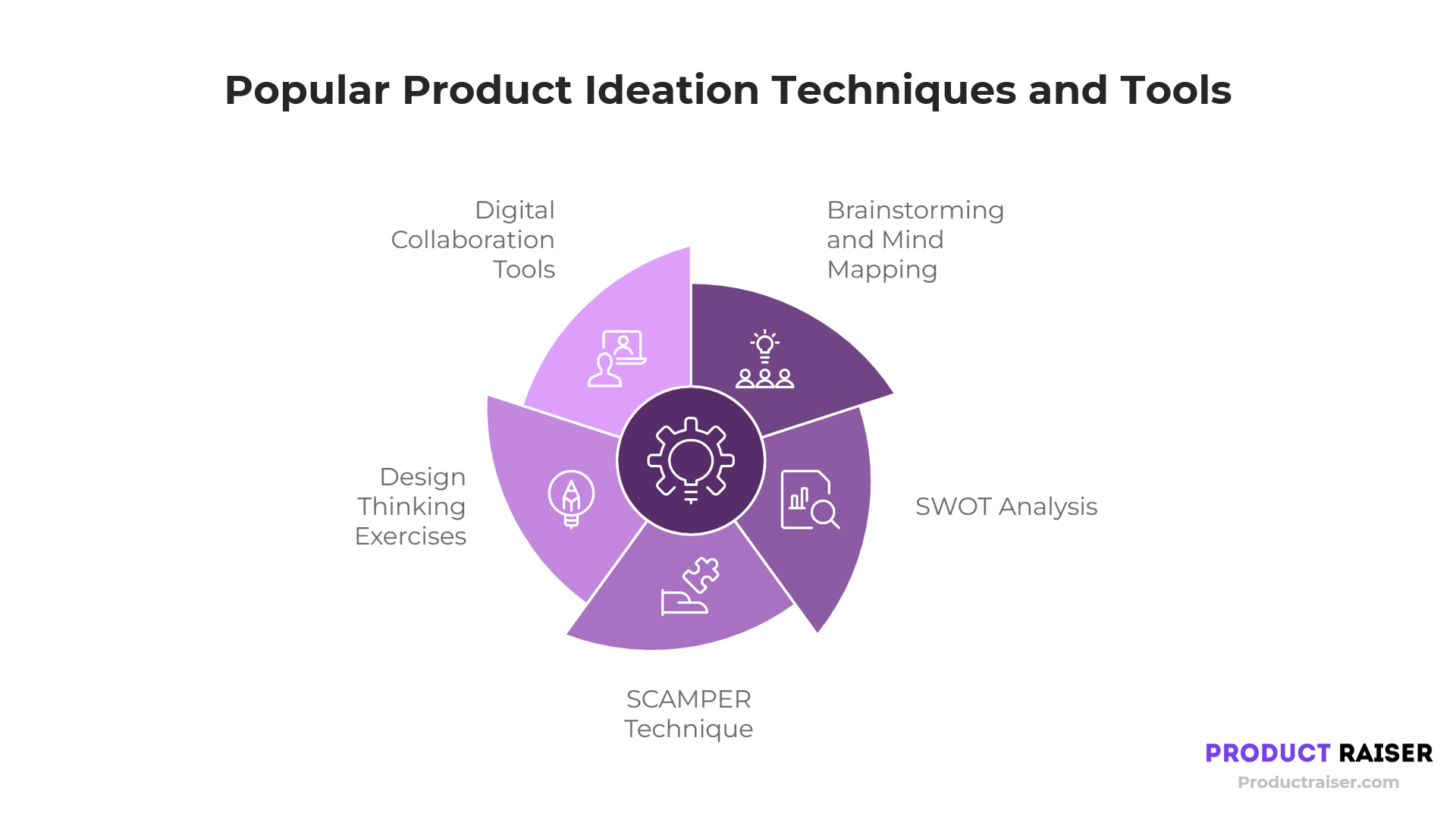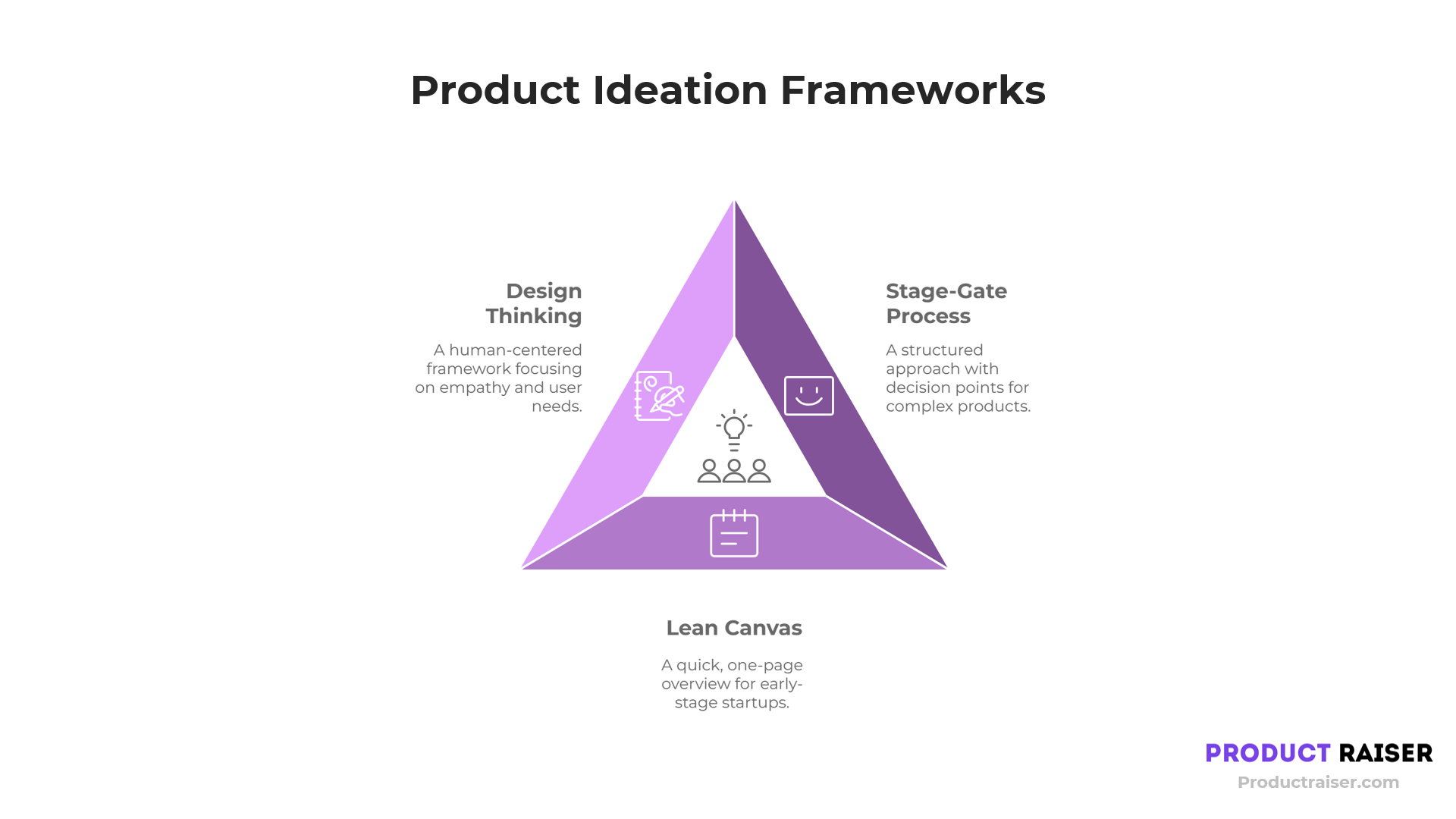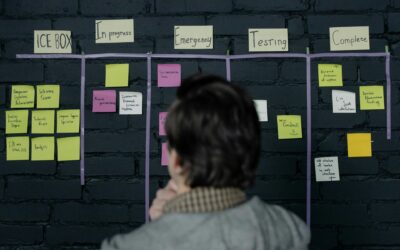Home
Best Product Ideation Frameworks and Processes
Learn key steps, agile techniques, and frameworks to master product ideation. Real-life examples and best practices for building products your customers will love.
CHRISTIAN CASSISI – 11/15/2024

Team working on product idea / Pexels.com / fauxels
Introduction to Product Ideation|
The Product Ideation Process: Key Stages|
Popular Product Ideation Techniques and Tools|
Agile Product Ideation|
Product Ideation Frameworks|
Best Practices for Effective Product Ideation|
Real-World Examples of Successful Product Ideation|
Conclusion: Make Products People Love|
If you’re building a new product, finding the right idea is essential. But it’s not just about coming up with any idea; it’s about finding an idea that solves a real problem and delivers value. This process is called product ideation. In this guide, we’ll walk you through the basics of product ideation, explain agile ideation, introduce useful frameworks, and share real-life examples to help you develop successful products.
Introduction to Product Ideation
What is Product Ideation?
Product ideation is the process of generating, evaluating, and refining ideas for a new product. It’s the first stage in product development, where teams brainstorm solutions to problems or explore new opportunities. Good product ideation is structured and customer-focused.
Why Product Ideation Matters
Without effective product ideation, companies risk building products no one needs or wants. Ideation helps companies ensure they’re solving real problems. It also encourages creativity and allows teams to explore different angles before committing resources to development.
Example: Netflix’s original DVD rental model came from the founders’ frustration with late fees at video stores. They identified a customer pain point (late fees) and created a product to solve it. This early ideation process helped Netflix become a global entertainment leader.
The Product Ideation Process: Key Stages

A well-organized product ideation process helps teams stay focused and efficient. Here are the main stages:
Understanding the Problem or Opportunity
Start by identifying the problem you want to solve. This might involve customer research, market analysis, or even personal frustration with an issue.
Example: Slack began as an internal tool to improve team communication in a game development company. The founders realized that existing solutions weren’t effective, which led to Slack’s creation.
Brainstorming Ideas
In this stage, the goal is to generate as many ideas as possible. Don’t worry about filtering or judging ideas yet—just focus on creativity. This can be done through brainstorming sessions, mind mapping, or team workshops.
Screening and Prioritizing Ideas
After brainstorming, it’s time to filter ideas. Consider factors like feasibility, cost, and potential impact. Choose the ideas that align best with your goals and customer needs.
Prototyping and Testing Ideas
Once you’ve selected a few ideas, create basic prototypes to test them. A prototype could be a sketch, a digital mockup, or even a clickable demo. Testing these early versions with real users gives you valuable feedback.
Refining and Selecting the Best Ideas
Use feedback from the prototype stage to refine your ideas. Choose the one that resonates most with users and aligns with your business goals. This refined idea is now ready to move into development.
You like it so far?
SIGN UP TO OUR NEWSLETTER TO BUILD PRODUCTS PEOPLE LOVE
Popular Product Ideation Techniques and Tools
Here are some techniques and tools to help you and your team generate and organize ideas effectively.

Brainstorming and Mind Mapping
Traditional brainstorming sessions are great for gathering a wide range of ideas. Mind mapping can also help by visually organizing concepts and ideas in a way that shows relationships.
SWOT Analysis
SWOT stands for Strengths, Weaknesses, Opportunities, and Threats. This technique helps teams analyze an idea’s potential from multiple angles and decide if it’s worth pursuing.
SCAMPER Technique
SCAMPER is an acronym for Substitute, Combine, Adapt, Modify, Put to another use, Eliminate, and Reverse. It’s a checklist that helps teams rethink and improve existing products or ideas.
Example: Apple often uses SCAMPER principles to create new versions of its products. By modifying, adapting, and enhancing previous models, they consistently deliver improvements that attract new users.
Design Thinking Exercises
Design thinking exercises encourage teams to empathize with users, define problems, ideate, prototype, and test. These exercises are especially helpful in keeping the user’s needs central throughout ideation.
Digital Collaboration Tools
Platforms like Miro, Trello, and Rapidr allow teams to share ideas, organize thoughts, and collaborate online. These tools are especially useful for remote teams.
Agile Product Ideation: A Flexible Approach
What is Agile Product Ideation?
Agile product ideation applies agile principles to the ideation process. Instead of spending months on planning, agile ideation breaks down the process into small, manageable parts, allowing for quick iterations and flexibility based on feedback.
Benefits of Agile in the Ideation Process
Agile ideation enables teams to adapt to feedback quickly and make adjustments before committing to a full product build. It’s a responsive way to test ideas, fail fast, and improve.
Example: Spotify uses agile methods to test new features on a small group of users, gather feedback, and refine the idea before releasing it widely. This approach lets them explore what works and what doesn’t without high risk.
Agile Ideation Techniques
Agile ideation applies agile principles—such as flexibility, iteration, and responsiveness—to the early stages of product development. This approach allows teams to generate, test, and refine ideas quickly. Here are two key techniques that can help teams move through the ideation phase effectively:
Sprint Planning is a core agile technique where a team sets aside a specific, short time frame—often called a “sprint”—dedicated to achieving a defined goal. In the context of product ideation, the goal is typically to generate and test as many promising ideas as possible.
- Sprint Length: In product ideation, sprints are typically one to two weeks long. This keeps the focus tight and ensures the team moves quickly.
- Objective Setting: At the start of the sprint, the team defines clear objectives. For ideation, this might mean generating a list of ideas, building a prototype, or conducting initial user tests. The sprint ends with a tangible outcome, such as a prototype or a summary of feedback.
- Ideation Activities: During an ideation sprint, the team can use techniques like brainstorming sessions, mind mapping, and design sprints to explore new concepts. Agile encourages openness, so the focus is on generating as many ideas as possible without immediately filtering them.
- Daily Standups: Teams often hold brief daily standup meetings during the sprint to check in on progress, address roadblocks, and ensure alignment. This keeps everyone focused and allows the team to adjust quickly if new information arises.
Example: Suppose a team at a fintech startup wants to develop a new mobile feature for budgeting. They could set a two-week sprint goal of generating three strong feature ideas, creating low-fidelity prototypes, and collecting initial user feedback. At the end of the sprint, they should have insights that guide which idea(s) to pursue in the next stage.
Rapid Prototyping is an agile technique for quickly creating and testing a basic version of a concept to validate its viability. This approach is valuable during ideation because it enables teams to experiment with ideas without a full-scale commitment, saving time and resources.
- Creating Low-Fidelity Prototypes: In rapid prototyping, teams typically start with low-fidelity versions—like sketches, wireframes, or basic mockups. These don’t have to look or feel polished; the goal is to quickly visualize the idea.
- Iterative Testing and Feedback: The prototype is then shared with a small group of users or stakeholders for feedback. By focusing on core functionality rather than perfection, the team can gather insights quickly.
- Improving Based on Feedback: Based on the feedback, the team can iterate on the prototype. Sometimes, this means revising the concept entirely; other times, it means refining details. The process is repeated until the team feels confident in the idea or decides to move on to a new concept.
Example: Consider a team at an e-commerce company exploring a virtual fitting room feature. They might use rapid prototyping to develop a basic interface where users can see virtual clothing on a model. Initial feedback could reveal what users like, such as viewing different sizes, and what needs improvement, like navigation ease. This quick validation helps them understand the idea’s potential without spending weeks on a full prototype.
Product Ideation Frameworks to Guide the Process
Frameworks provide a structured approach to product ideation. Here are some popular ones to consider:

The Stage-Gate Process
The Stage-Gate process divides product development into stages separated by “gates.” Each gate represents a decision point where the team decides whether to continue, revise, or stop an idea.
Lean Canvas for Product Ideation
The Lean Canvas is a one-page business plan that helps teams think through critical aspects of their idea, such as the problem, solution, key metrics, and customer segments. It’s a quick way to map out the essentials of your product.
Design Thinking as an Ideation Framework
The Design Thinking framework focuses on empathy, defining the problem, ideating, prototyping, and testing. It’s a human-centered approach that keeps the user’s needs central.
When to Use Each Framework
- Stage-Gate: Best for more complex products with multiple checkpoints.
- Lean Canvas: Ideal for early-stage startups who need a quick overview.
- Design Thinking: Great for ideating and testing solutions to user-centered problems.
Best Practices for Effective Product Ideation
To ensure your product ideation is both effective and efficient, follow these best practices:
Emphasizing a Customer-Centric Approach
Always start by understanding your customers’ needs and pain points. The most successful products solve real problems, which makes it critical to invest time in customer research early on. Conduct interviews, surveys, or even simple observational studies to gather direct insights. When your product aligns with real customer needs, it has a much greater chance of success and adoption in the market.
Encouraging Collaboration and Open Communication
Create an environment where everyone feels free to share ideas without judgment. When team members across departments—like design, engineering, and marketing—contribute, you get a richer pool of ideas and more creative solutions. Open communication also means giving and receiving feedback constructively, which helps refine ideas and ensures the entire team is aligned on the product vision.
Iteration and Adaptability
Be prepared to refine and change your ideas based on feedback from users, stakeholders, and team members. Iteration allows you to test assumptions and pivot when necessary, which is essential for finding the best solution. Approach ideation as a cycle rather than a one-time process, continually revisiting and improving your ideas until they fully address the problem.
Fostering a Culture of Creativity and Experimentation
Encourage team members to think outside the box and explore bold, unconventional ideas. This requires creating a safe space where experimentation is celebrated, even if not all ideas work out. Experimentation can lead to breakthrough concepts that set your product apart from competitors. Support creativity by giving your team access to tools, time, and resources for ideation.
Setting Clear Objectives and Success Metrics
Define what success looks like for each stage of ideation, whether it’s generating a set number of ideas, creating a working prototype, or reaching a specific level of user satisfaction. Having clear objectives and metrics helps keep your team focused and enables you to measure progress effectively. Metrics also provide a benchmark for evaluating whether an idea should move forward, be refined, or be abandoned.
Real-World Examples of Successful Product Ideation
Learning from successful companies can provide inspiration for your own ideation process.
- Airbnb: Airbnb’s founders used ideation to transform their original concept of renting air mattresses into a full lodging platform. They continuously iterated based on user feedback, which helped them find the right product-market fit.
- Google’s 20% Time: Google encourages employees to spend 20% of their work time on side projects. This led to products like Gmail and Google News. It’s a unique approach to ideation that supports creativity within a structured company.
- Netflix’s Recommendation System: Netflix iterated on its recommendation algorithm based on user viewing habits. By testing different methods and collecting feedback, Netflix built a feature that keeps users engaged and loyal.
Conclusion
Effective product ideation is the foundation of building products that resonate with users. By following a structured process, embracing agile techniques, and using the right frameworks, you can increase your chances of developing a product that meets real needs.
Recap:
- Start by understanding the problem or opportunity.
- Use structured frameworks and agile methods to refine ideas.
- Focus on customer needs, encourage collaboration, and stay adaptable.
By investing time in the ideation phase, you set your team up for a smoother development process and a greater likelihood of building a successful product.
Newsletter
GET MORE INSIGHTS ABOUT PRODUT IDEATION, HERE!
Stay Ahead Of Others With Our Newest Articles
What is Agile Product Lifecycle Management
Master essential Product Management KPIs to boost growth, user satisfaction, and team efficiency with data-driven insights and strategies.
Product Manager Explained
Master essential Product Management KPIs to boost growth, user satisfaction, and team efficiency with data-driven insights and strategies.
Master working with Product Management KPIs
Master essential Product Management KPIs to boost growth, user satisfaction, and team efficiency with data-driven insights and strategies.
How to Use Personas
Learn how to turn your customer personas into actionable insights that improve your product development and marketing strategies.
Create and Design the Perfect Customer Persona
Learn how to create data-driven user personas that turn guesswork into smart product decisions to drive your product’s success.
Everything You Need to Know About Product Management for Beginners
Unlock the secrets of successful product management and learn how to turn ideas into winning products.






